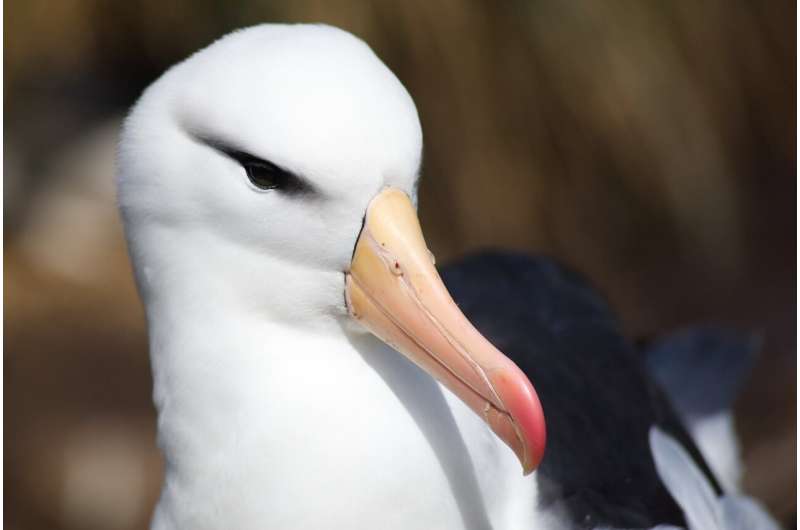World's longest-winged birds go easy on older partners

A new study led by the University of Liverpool has found that wandering albatrosses with older partners spend less time on foraging trips than those with more sprightly partners so that their mate has a shorter wait without food.
These enormous birds hold the record for the world's longest wingspan (3 meters on average) and can reach 50 years of age. Found gliding above the southern Indian and Antarctic Oceans, wandering albatrosses generally mate for life, breeding with the same partner every two years.
After the female lays her single egg, the prospective parents embark on one of the longest incubation periods amongst birds. They spend the next 78 days taking it in turns to incubate, while their mate goes to sea to feed.
These feeding trips last for around 12 days on average, during which time the nest-bound parent must stay put without food. This can have significant negative impacts on their body condition, which get worse the longer their partner is away.
In a study published in the journal Ecology and Evolution, researchers analyzed data from the foraging trips of 71 pairs nesting in the remote Crozet Archipelago in the southern Indian Ocean.
The data, collected from small devices fitted to the legs of wandering albatrosses, enabled the team to measure the amount of time they spent at sea. This revealed that birds mated to older partners took shorter feeding trips and so returned to the nest sooner than those with younger partners.
This might be because the birds are able to assess how long their partner can go without food. As older birds may struggle to withstand the pressure of a long fast, their partners choose to relieve them sooner. This ultimately benefits both parents, who rely on one another to rear their young.

Lead paper author of the paper and Ph.D. student in the University's School of Environmental Sciences, Finn McCully said, "On paper, this behavior looks very caring: one parent gives up feeding time to help protect the other. In reality, this behavior benefits both parents. Albatrosses cannot be single parents; the conditions are too harsh. If one parent runs the other one ragged by making them do too much work, they will lose the chick which is disastrous for both partners."
"Our findings suggest that the birds have a way of telling how much pressure their partner is able to take. This familiarity may develop over the years they spend breeding together, as they get to know each other's limits, but more research is required to test this theory."
"So if you are a wandering albatross and your partner is that little bit older and less able to recover from a long fast, it's in your best interests to take extra steps to help keep them fighting fit".
Although previous work has indicated that wandering albatrosses adjust their own foraging behavior as they get older, this is the first study to suggest that their partner's age might also be important.
Finn McCully added, "We thought that birds would care more about their own age than that of their partner when making decisions, so these results were truly unexpected."
"Our results just go to show how complicated the lives of animals can be and how nature is full of surprises!"
Wandering albatrosses in this population have been actively studied since 1966. Threats, particularly that of being caught in fishing gear, caused their numbers to decline steeply in the 1970s leading to the International Union for Conservation of Nature (IUCN) labeling this species as 'vulnerable'.
More information: Fionnuala R. McCully et al, Partner intrinsic characteristics influence foraging trip duration, but not coordination of care in wandering albatrosses Diomedea exulans, Ecology and Evolution (2022). DOI: 10.1002/ece3.9621
Journal information: Ecology and Evolution
Provided by University of Liverpool

















